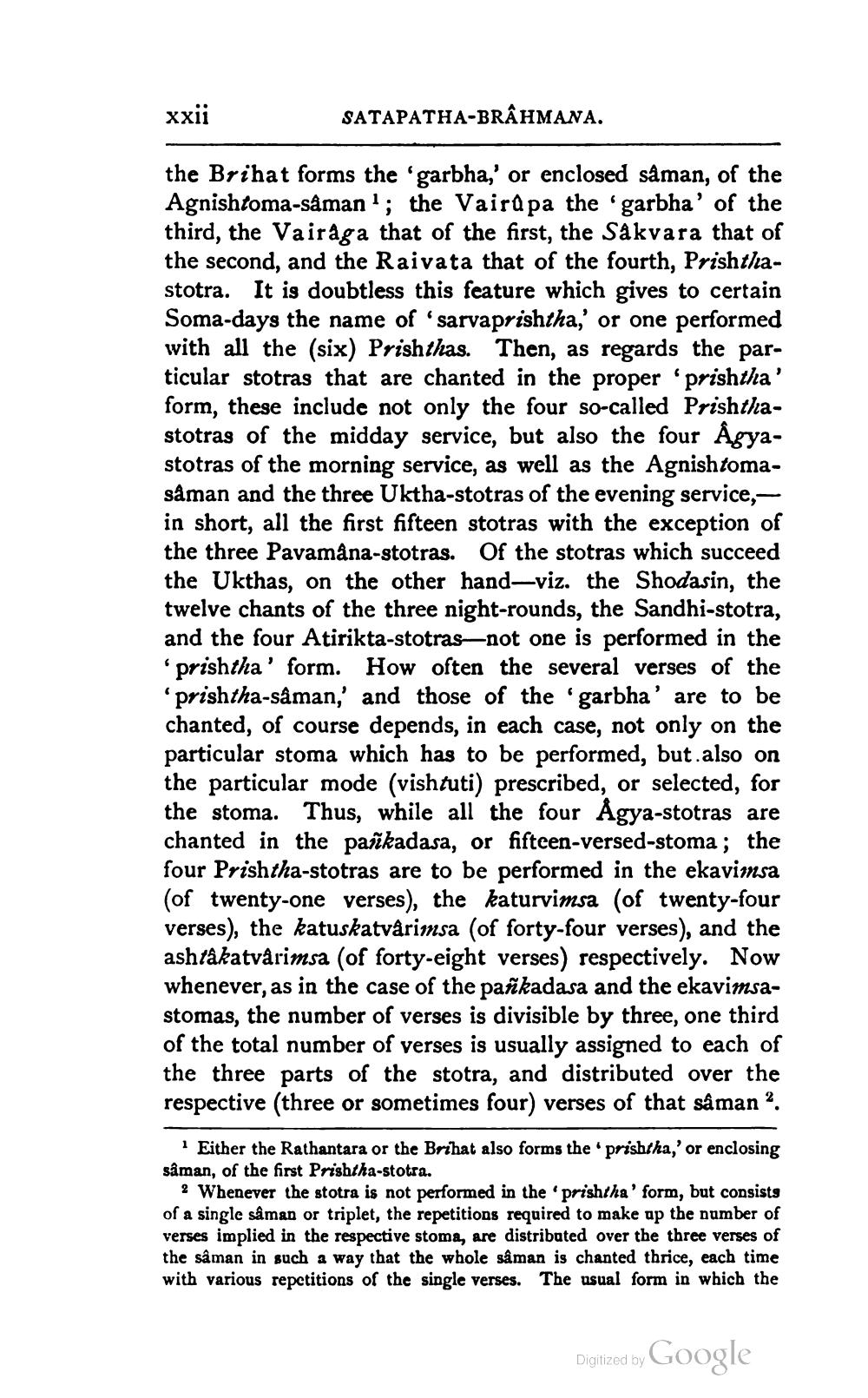________________
xxii
SATAPATHA-BRAHMANA.
the Brihat forms the 'garbha,' or enclosed saman, of the Agnishtoma-saman'; the Vaira pa the 'garbha' of the third, the Vairaga that of the first, the Sakvara that of the second, and the Raivata that of the fourth, Prishthastotra. It is doubtless this feature which gives to certain Soma-days the name of 'sarvaprishtha,' or one performed with all the (six) Prishthas. Then, as regards the particular stotras that are chanted in the proper 'prishtha' form, these include not only the four so-called Prishthastotras of the midday service, but also the four Ågyastotras of the morning service, as well as the Agnishtomasåman and the three Uktha-stotras of the evening service, in short, all the first fifteen stotras with the exception of the three Pavamâna-stotras. Of the stotras which succeed the Ukthas, on the other hand-viz. the Shodasin, the twelve chants of the three night-rounds, the Sandhi-stotra, and the four Atirikta-stotras-not one is performed in the
prishtha' form. How often the several verses of the 'prishtha-saman,' and those of the 'garbha' are to be chanted, of course depends, in each case, not only on the particular stoma which has to be performed, but also on the particular mode (vishtuti) prescribed, or selected, for the stoma. Thus, while all the four Ågya-stotras are chanted in the pasikadasa, or fifteen-versed-stoma; the four Prishtha-stotras are to be performed in the ekavimsa (of twenty-one verses), the katurvimsa (of twenty-four verses), the katuskatvarimsa (of forty-four verses), and the ashtakatvarimsa (of forty-eight verses) respectively. Now whenever, as in the case of the pañkadasa and the ekavimsastomas, the number of verses is divisible by three, one third of the total number of verses is usually assigned to each of the three parts of the stotra, and distributed over the respective (three or sometimes four) verses of that saman.
· Either the Rathantara or the Brihat also forms the prishtha,' or enclosing saman, of the first Prishtha-stotra.
2 Whenever the stotra is not performed in the prishtha' form, but consists of a single saman or triplet, the repetitions required to make up the number of verses implied in the respective stoma, are distributed over the three verses of the sâman in such a way that the whole såman is chanted thrice, each time with various repetitions of the single verses. The usual form in which the
Digitized by Google




